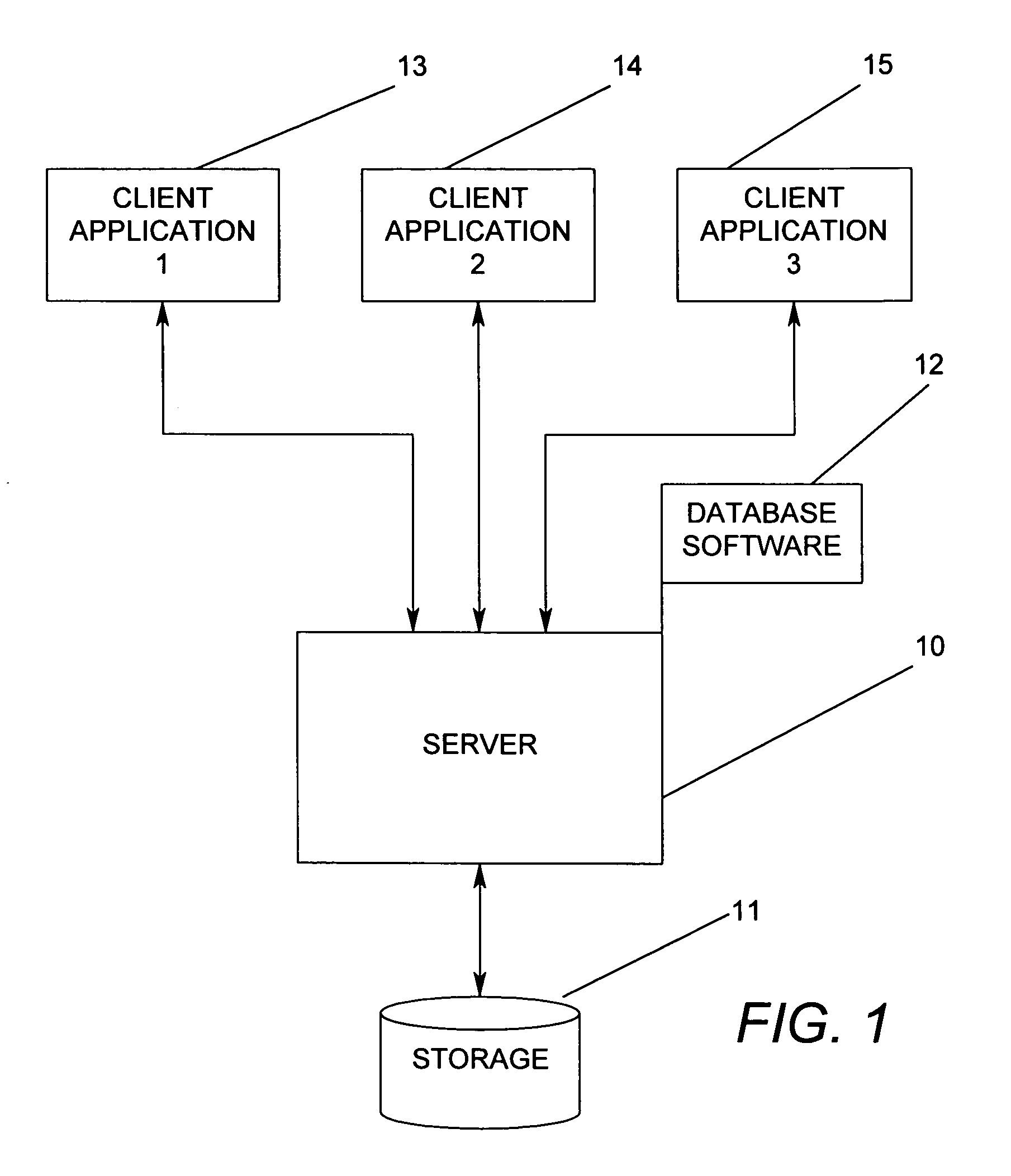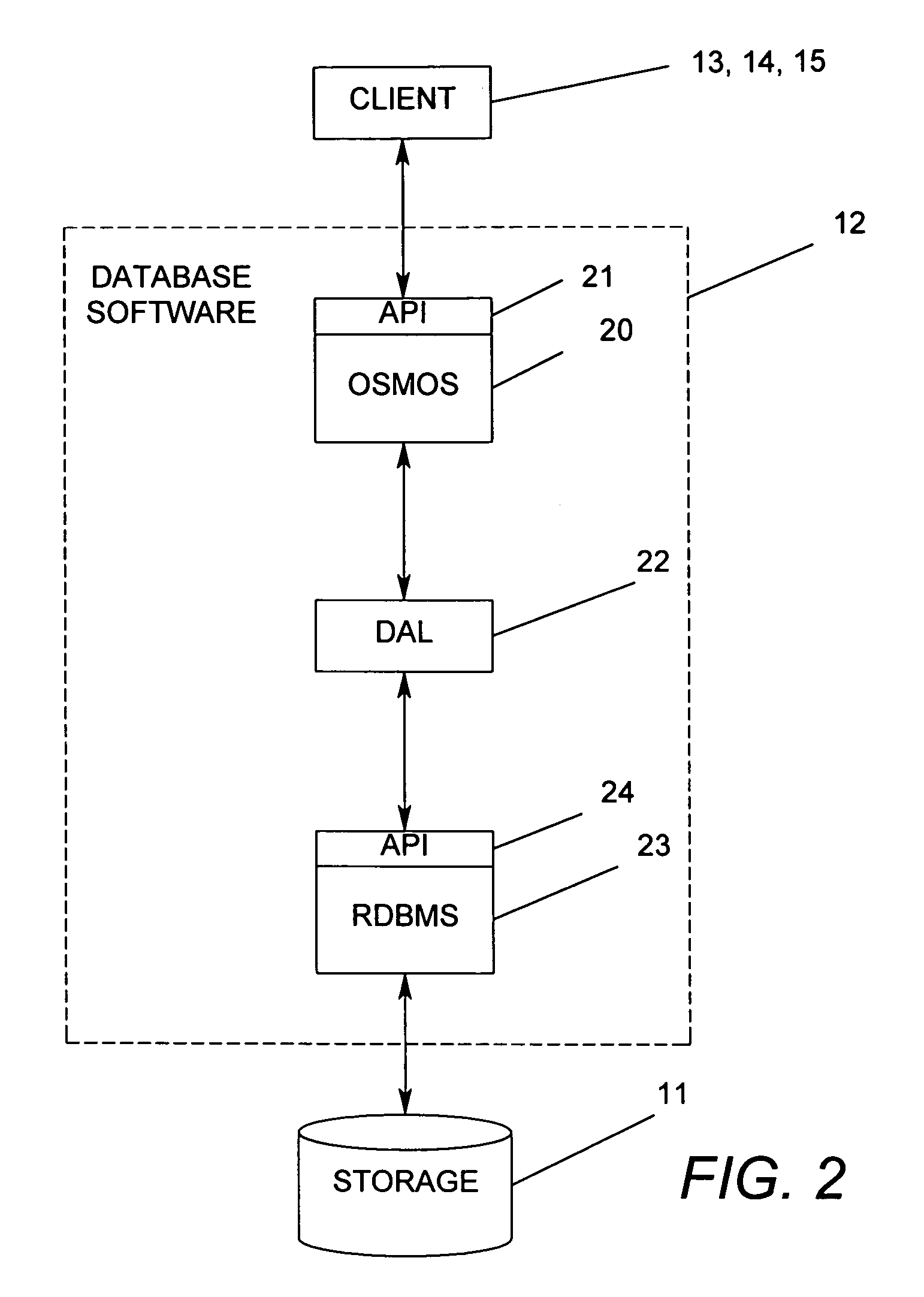Method for generating unique object indentifiers in a data abstraction layer disposed between first and second DBMS software in response to parent thread performing client application
a data abstraction layer and object technology, applied in the field of object-oriented programming techniques, can solve the problems of taking a long time, and achieve the effects of reducing wait time, reducing lock time, and reducing time spent locking an oidgen table entry
- Summary
- Abstract
- Description
- Claims
- Application Information
AI Technical Summary
Benefits of technology
Problems solved by technology
Method used
Image
Examples
Embodiment Construction
[0020]Before proceeding with a detailed description of the method of the present invention a background discussion of object-oriented terminology and repositories would be helpful. This discussion will focus on the terminology used herein. Background information that may be helpful in understanding the present invention may be had by reference to an issued U.S. Pat. No. 5,408,657 entitled METHOD OF IMPOSING MULTI-OBJECT CONSTRAINTS ON DATA FILES IN A DATA PROCESSING SYSTEM by Richard Bigelow and John Thompson, and assigned to the same assignee hereof.
Object Terminology
[0021]A normal object program stores objects in the computer system's memory. When the program terminates, the memory used by those objects is freed and reused by other programs, making the objects that the program stored transient. An object database stores objects on a computer disk. Since the information on a computer disk remains in existence, even when the computer is turned off, an object database provides the ab...
PUM
 Login to View More
Login to View More Abstract
Description
Claims
Application Information
 Login to View More
Login to View More - R&D
- Intellectual Property
- Life Sciences
- Materials
- Tech Scout
- Unparalleled Data Quality
- Higher Quality Content
- 60% Fewer Hallucinations
Browse by: Latest US Patents, China's latest patents, Technical Efficacy Thesaurus, Application Domain, Technology Topic, Popular Technical Reports.
© 2025 PatSnap. All rights reserved.Legal|Privacy policy|Modern Slavery Act Transparency Statement|Sitemap|About US| Contact US: help@patsnap.com



